Food Waste Initiative: Resources and Media
Model Governance Tools
ELI and NRDC have developed model food waste reduction policies to make it easier for local governments to adopt solutions. Based on extensive best practices research, these models provide legal language as well as background information and alternative approaches—all of which are intended to help guide stakeholders and policymakers in tailoring the policy to their unique circumstances.
Food Waste Prevention Resource Guide Series
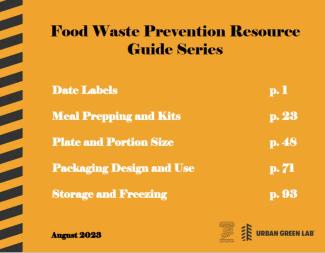
ELI created the Food Waste Prevention Resource Guide Series (funded by Urban Green Lab with support from the Posner Foundation of Pittsburgh) to provide ready-to-use, vetted, and science-based resources for classrooms, households, and workplaces. The Guides provide a range of resources, such as lessons plans and research reports, on specific food waste prevention strategies, including: Date Labels; Packaging Design and Use; Meal Prepping and Kits; Plate and Portion Size; and Storage and Freezing. This PDF compiles all five resource guides into one document.
New Toolkit Helps Cities Leverage Plant-Based Proteins for Climate Action
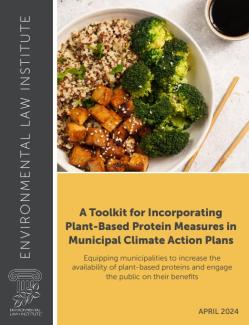
Cities have an outsized carbon footprint and are on the frontlines of adapting to climate change impacts. Rising to the challenge, many cities have developed climate action plans (CAP) that include measures that can be taken to achieve targeted greenhouse gas (GHG) emissions reductions.
A Toolkit for Incorporating Plant-Based Protein Measures in Municipal Climate Action Plans
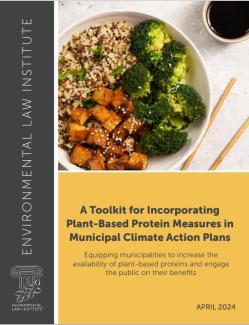
Municipalities and other local governments around the country are setting climate mitigation targets and adaptation goals. These municipalities typically develop a Climate Action Plan (CAP) that outlines the measures they plan to take to meet their targets and goals. Often missing from these CAPs are measures to increase the availability of plant-based proteins and engage the public on their benefits.
Tackling Food Waste: ELI’s New Food Waste Prevention Resource Guide Series
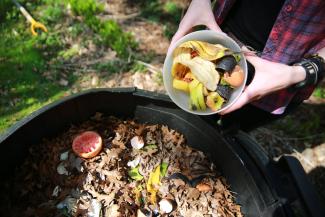
ELI recently created the Food Waste Prevention Resource Guide Series for Urban Green Lab, a Nashville-based sustainability NGO, in order to build the capacity of classrooms, households, and workplaces to prevent food waste.
Food Waste Prevention Resource Guide Series: Storage and Freezing
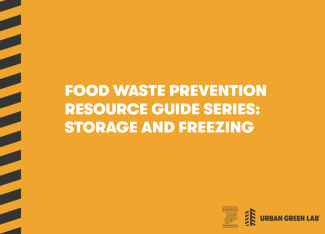
The Resource Guide Series highlights five proven food waste prevention strategies: packaging design and use, date labels, meal prepping and kits, storage and freezing, and plate and portion size. Each Resource Guide covers one of the five topics, includes key tips as well as a list of helpful resources, and is organized into three charts each of which is tailored to a different audience—classrooms, households, and workplaces.
Food Waste Prevention Resource Guide Series: Plate and Portion Size
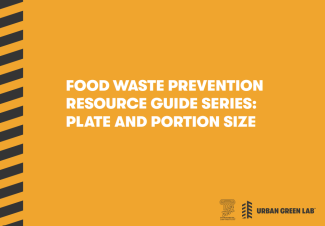
The Resource Guide Series highlights five proven food waste prevention strategies: packaging design and use, date labels, meal prepping and kits, storage and freezing, and plate and portion size. Each Resource Guide covers one of the five topics, includes key tips as well as a list of helpful resources, and is organized into three charts each of which is tailored to a different audience—classrooms, households, and workplaces.
Food Waste Prevention Resource Guide Series: Meal Prepping and Kits
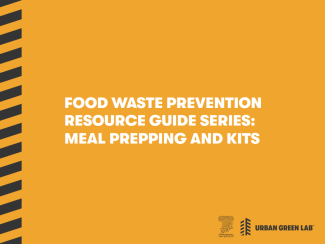
The Resource Guide Series highlights five proven food waste prevention strategies: packaging design and use, date labels, meal prepping and kits, storage and freezing, and plate and portion size. Each Resource Guide covers one of the five topics, includes key tips as well as a list of helpful resources, and is organized into three charts each of which is tailored to a different audience—classrooms, households, and workplaces.
Food Waste Prevention Resource Guide Series: Packaging Design and Use
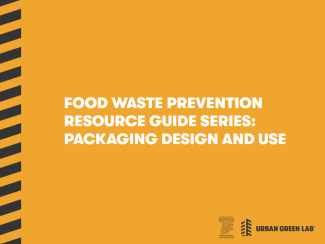
The Resource Guide Series highlights five proven food waste prevention strategies: packaging design and use, date labels, meal prepping and kits, storage and freezing, and plate and portion size. Each Resource Guide covers one of the five topics, includes key tips as well as a list of helpful resources, and is organized into three charts each of which is tailored to a different audience—classrooms, households, and workplaces.
